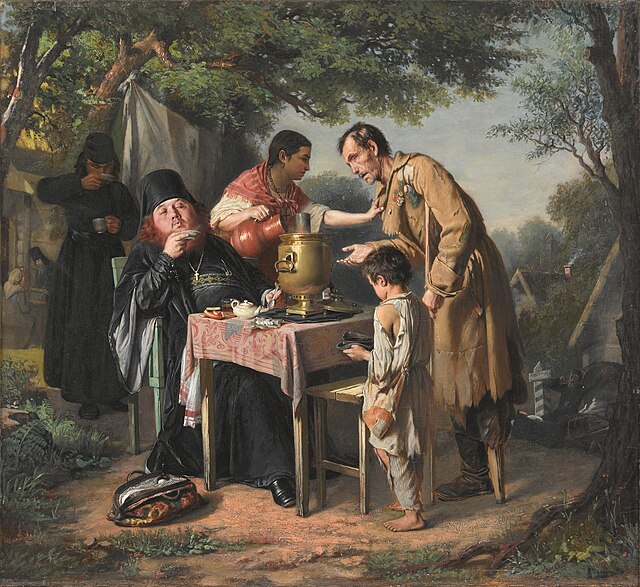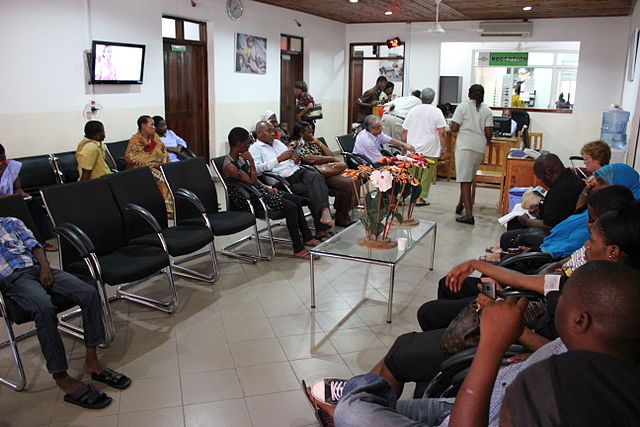Social inequality occurs when resources within a society are distributed unevenly, often as a result of inequitable allocation practices that create distinct unequal patterns based on socially defined categories of people. Differences in accessing social goods within society are influenced by factors like power, religion, kinship, prestige, race, ethnicity, gender, age, sexual orientation, and class. Social inequality usually implies the lack of equality of outcome, but may alternatively be conceptualized as a lack of equality in access to opportunity.
An 1862 painting by Vasily Perov depicts impoverished people meeting a wealthy man.
Street in Camden, New Jersey which has evident urban decay
A woman and three men sitting in a conference meeting
Patients waiting to be seen by a doctor in Disability Hospital
Social status is the relative level of social value a person is considered to possess. Such social value includes respect, honor, assumed competence, and deference. On one hand, social scientists view status as a "reward" for group members who treat others well and take initiative. This is one explanation for its apparent cross-cultural universality. On the other hand, while people with higher status experience a litany of benefits--such as greater health, admiration, resources, influence, and freedom--those with lower status experience poorer outcomes across all of those metrics.
A medical professional shows students a model of human anatomy. People with higher status, like this instructor, command more attention, are more influential, and their statements are evaluated as more accurate, compared to others in the group.





